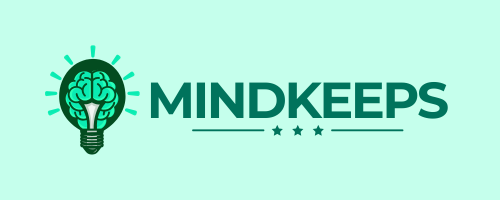The 3-2-1 Rule for Optimizing Workplace Wellness
Mind Keeps
- February 1, 2025
- 1 Comment
Table of Contents
ToggleIntroduction
Did you know that 70% of U.S. workers would consider changing jobs for better benefits? This statistic, as highlighted in a recent survey by Wellable, underscores the growing demand for workplace wellness programs. In today’s dynamic and hybrid work environments, employee satisfaction and productivity are no longer solely tied to salaries or job titles. Instead, they hinge on a workplace culture that prioritizes physical, mental, and emotional well-being.
Workplace wellness is no longer optional; it’s a necessity. As organizations grapple with the challenges of retaining top talent and maintaining high performance, investing in wellness initiatives has become a strategic imperative. According to insights from the Society for Human Resource Management (SHRM), companies that promote wellness see significant improvements in employee productivity and overall performance. In a fast-paced world where burnout and disengagement are common, the need for comprehensive workplace wellness programs has never been more critical.
Enter the 3-2-1 Rule—a straightforward yet transformative framework designed to optimize workplace wellness. This method focuses on three key areas of well-being, two actionable strategies for each, and one overarching goal to drive meaningful change. By breaking down wellness into manageable steps, the 3-2-1 Rule empowers organizations to create healthier, more engaged teams.
Ready to transform your workplace? Discover how MindKeeps’ virtual mental wellness membership program can guide your organization toward a more balanced and productive future. Start with a free consultation today!

Understanding Workplace Wellness
What is Workplace Wellness?
Workplace wellness refers to programs and initiatives designed to enhance the overall well-being of employees by addressing their physical, mental, and emotional health. As defined by the Centers for Disease Control and Prevention (CDC), workplace health programs are “coordinated and comprehensive strategies implemented at the worksite to encourage the health and safety of all employees.” These programs often include activities such as fitness challenges, mental health support, and resources for maintaining a healthy work-life balance. At its core, workplace wellness is about creating an environment where employees can thrive, both personally and professionally.
The Benefits of Workplace Wellness
Investing in workplace wellness offers tangible benefits for both employees and organizations. According to Indeed, companies that prioritize wellness see increased productivity, reduced absenteeism, and improved employee morale. When employees feel supported in their well-being, they are more engaged, motivated, and committed to their roles. Additionally, fostering a culture of wellness can enhance team collaboration, reduce healthcare costs, and attract top talent. Workplace wellness programs can bridge the gap between employee health and organizational success, driving better outcomes for everyone involved.
Challenges in Achieving Workplace Wellness
Despite its advantages, workplace wellness is not without challenges. Many organizations face barriers such as limited budgets, lack of employee participation, and difficulties in measuring program effectiveness. Additionally, ensuring inclusivity and addressing diverse employee needs can be complex. However, these obstacles can be overcome with innovative approaches and consistent feedback from employees.
Ready to prioritize wellness in your workplace? Discover how MindKeeps’ virtual mental wellness membership program can help your organization achieve its wellness goals. Schedule your free consultation today!

Introducing the 3-2-1 Rule
What is the 3-2-1 Rule?
The 3-2-1 Rule is a simple yet highly effective framework designed to optimize workplace wellness by breaking it down into manageable components. This approach focuses on three key areas: physical health, mental health, and work-life balance. For each area, two actionable strategies are recommended to foster improvement, and one overarching goal is set to measure success. By addressing these critical dimensions of well-being, the 3-2-1 Rule provides organizations with a structured yet flexible roadmap to enhance employee wellness.
For example:
- Physical Health: Encourage daily movement and provide ergonomic workspaces.
- Mental Health: Promote open communication and offer access to mental health resources.
- Work-Life Balance: Implement flexible schedules and establish clear boundaries to prevent burnout.
Why It Works
The 3-2-1 Rule simplifies workplace wellness into actionable steps, making it easy for organizations to implement changes that cater to diverse employee needs. According to a study by Deloitte, structured wellness strategies can lead to a 10% increase in productivity among participants. This demonstrates the power of clear, goal-oriented initiatives in driving positive outcomes for both employees and businesses.
Ready to transform your workplace? Learn how MindKeeps’ virtual mental wellness membership program can help you implement sustainable wellness strategies. Book your free consultation today!

Applying the 3-2-1 Rule to Workplace Wellness
The 3-2-1 Rule offers a practical framework for improving workplace wellness by focusing on three essential areas: physical health, mental health, and work-life balance. By implementing two actionable strategies for each area and setting one measurable goal, organizations can create a holistic approach to employee well-being.
4.1 Focus Area 1: Physical Health
Importance
Physical health is a cornerstone of workplace wellness, directly influencing employee performance, energy levels, and overall productivity. According to Quest Diagnostics, workplace wellness programs help employees adopt and maintain healthy behaviors through education, motivation, and support. When employees are physically healthy, they are more likely to stay engaged, reduce absenteeism, and contribute to a positive work environment
Two Strategies
- Wellness Challenges: Implement initiatives like step challenges, yoga sessions, or fitness competitions to encourage movement and foster a sense of community. These activities not only improve physical health but also enhance teamwork and morale.
- Ergonomic Workspaces: Provide employees with ergonomic furniture and tools, such as adjustable desks and supportive chairs, to reduce physical strain and promote comfort during work hours.
One Goal
Create a healthier workforce by reducing physical strain and encouraging active lifestyles, leading to sustained productivity and reduced healthcare costs.
4.2 Focus Area 2: Mental Health
Importance
Mental health is a critical component of workplace wellness. Employees with strong mental health are more resilient, productive, and less prone to burnout. As highlighted by Gallup, employee well-being significantly impacts engagement and reduces daily stress levels. Prioritizing mental health fosters a supportive environment that encourages employees to thrive.
Two Strategies
- Open Communication and Awareness: Promote mental health awareness through workshops and training sessions. Encourage open dialogue to reduce stigma and empower employees to seek help when needed.
- Access to Resources: Offer access to mental health apps, virtual counseling, or Employee Assistance Programs (EAPs) to provide employees with professional support and tools for stress management.
One Goal
Build a supportive workplace environment where employees feel valued and empowered to prioritize their mental health.
4.3 Focus Area 3: Work-Life Balance
Importance
Work-life balance is a critical aspect of workplace wellness, directly affecting employee satisfaction and retention. Referencing The Times, supporting employee well-being, including mental health, is crucial, especially as mental health issues are now a leading cause of workplace absence. A healthy balance ensures employees can perform their roles effectively without compromising their personal lives.
Two Strategies
- Flexible Work Schedules: Encourage flexible hours or remote work options to help employees manage personal and professional responsibilities more effectively.
- Boundaries to Prevent Burnout: Establish policies like “no after-hours emails” to respect employees’ personal time and reduce the risk of burnout.
One Goal
Foster a culture that respects personal time, ensuring employees feel supported and valued in both their professional and personal lives.
Final Thoughts
The 3-2-1 Rule simplifies workplace wellness into actionable steps, enabling organizations to address the diverse needs of their workforce. By focusing on physical health, mental health, and work-life balance, businesses can create a thriving workplace environment that benefits both employees and the organization.
Take the Next Step
MindKeeps offers a comprehensive virtual mental wellness membership program tailored to meet the unique needs of your workforce. Schedule your free consultation today to discover how we can help you implement sustainable wellness strategies.

Measuring the Impact of the 3-2-1 Rule
Effectively implementing the 3-2-1 Rule is just the beginning; measuring its impact is essential to ensure that workplace wellness efforts yield tangible results. By tracking progress and incorporating feedback, organizations can refine their strategies for maximum benefit.
Tracking Progress
To evaluate the success of the 3-2-1 Rule, organizations must rely on measurable data. As highlighted by Deloitte, analyzing well-being’s impact on organizational performance is crucial, as structured wellness programs have been shown to boost productivity by up to 10%. Methods such as employee surveys, productivity metrics, and participation rates in wellness programs offer valuable insights into the rule’s effectiveness. Regularly reviewing these metrics helps identify trends and areas that require further improvement.
Feedback Loop
Employee feedback plays a pivotal role in optimizing wellness initiatives. Gathering input through anonymous surveys or focus groups ensures that employees feel heard and valued. Feedback can uncover hidden challenges and inspire innovative solutions, making the 3-2-1 Rule even more effective. A continuous feedback loop allows organizations to adapt to the evolving needs of their workforce, ensuring sustained engagement and success.
Final Thoughts
Measuring the impact of workplace wellness efforts ensures continuous improvement. Organizations that prioritize tracking and feedback can refine their strategies, creating a healthier and more productive work environment.
Take Action with MindKeeps
Discover how MindKeeps can help you implement and measure effective wellness strategies tailored to your organization. Schedule your free consultation today to learn more about our virtual mental wellness membership program.

Conclusion
Workplace wellness is no longer a luxury but a critical component of organizational success. The 3-2-1 Rule simplifies the journey toward fostering healthier, happier, and more productive employees by focusing on three key areas: physical health, mental health, and work-life balance. According to a recent study, 84% of employers reported improved productivity and performance after implementing wellness programs, highlighting the undeniable benefits of prioritizing employee well-being.
The 3-2-1 Rule is a game-changer for optimizing workplace wellness. Its simplicity and adaptability allow organizations of all sizes to address their unique challenges while empowering employees to thrive. By setting clear goals and adopting actionable strategies, companies can bridge the gap between employee satisfaction and organizational success.
Now is the time to take action. At MindKeeps, we specialize in helping businesses implement effective mental health and wellness strategies tailored to their workforce. With our virtual mental wellness membership program, you can foster a culture of well-being while driving measurable results.
Ready to transform your workplace? Schedule a free consultation with MindKeeps today and discover how our expert guidance can elevate your organization’s wellness efforts. Let’s work together to create a healthier, more engaged workforce.
All Categories
This is your space for insight, inspiration, and growth. This blog is dedicated to empowering you with valuable tools and strategiesto nurture your mental well-being. Whether you’re exploring new ways to manage stress, seeking motivation to achieve your goals, or simply looking for a sense of community, you’re in the right place. Here, you’ll find expert advice, pratical tips,a snd thought-provoking articles desined to support your journey toward balance, resilience, and a healthier mindset.
Your mental wellness journey starts here—let’s grow togethe!
- All Posts
- Community Mental Health
- Family and Mental Health
- Mental Health and Personal Growth
- Mental Health Education and Awareness
- Mindfulness and Holistic Wellness
- Self-Care and Emotional Resilience
- Stress Management and Productivity
- Support for Mental Health Conditions
- Virtual Services for Mental Health
- Workplace and Mental Wellness
Benefit from our mental health consulting services and mental wellness membership program.

















1 Comment
Your comment is awaiting moderation.
2u6den
Great post!